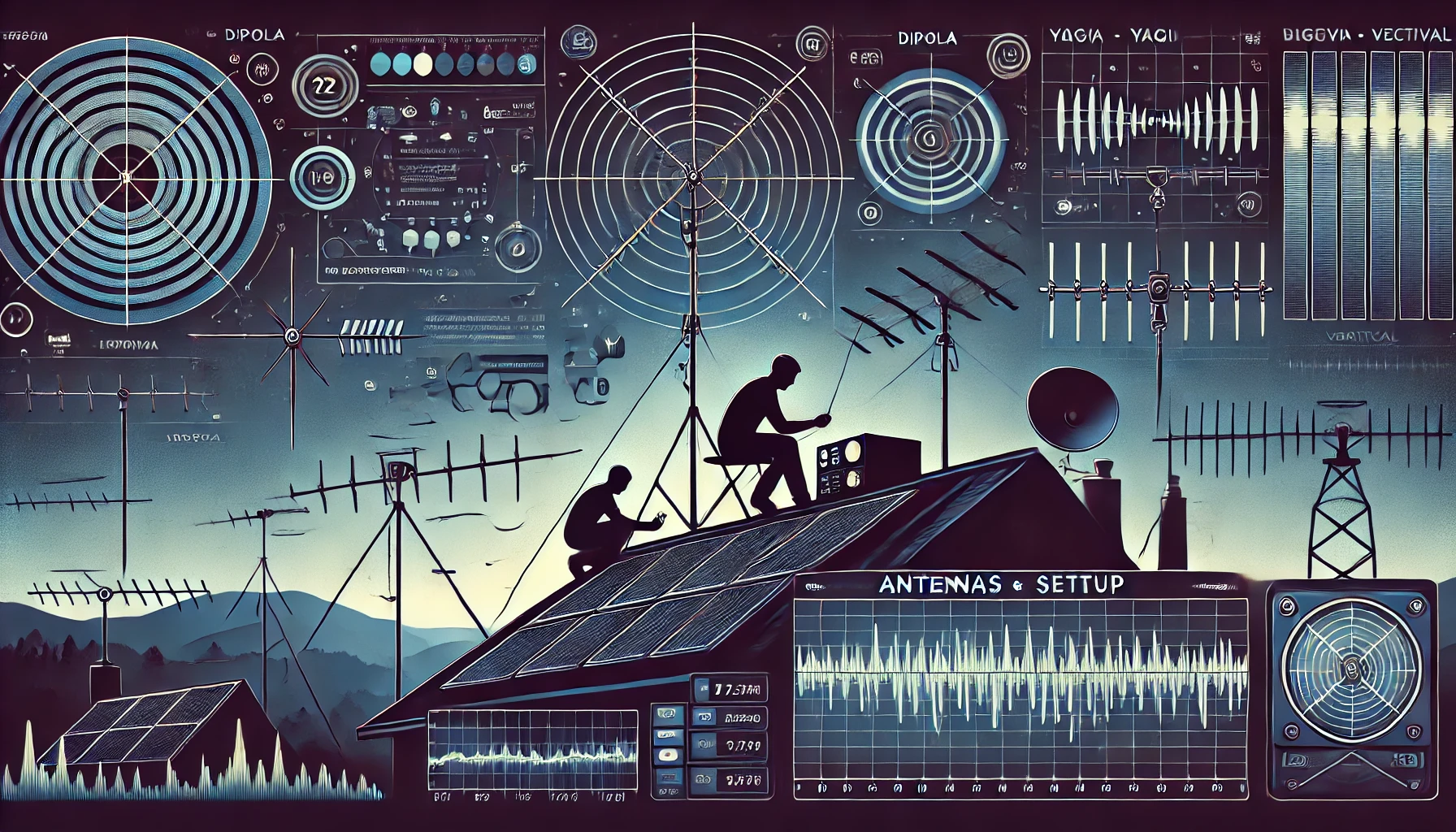Antenna Basics and Setup
An antenna is a critical component of any amateur radio station, serving as the conduit between your transceiver and the airwaves. A well-chosen and properly installed antenna can significantly enhance your communication capabilities. This guide provides an in-depth overview of antenna fundamentals and offers practical advice on setting up your first antenna.
Understanding Antenna Fundamentals
Antennas function by converting electrical signals from your transmitter into electromagnetic waves that travel through the air, and vice versa for incoming signals. The efficiency of this conversion process greatly influences the quality and range of your communications.
Key Concepts:
- Resonance: An antenna operates most efficiently when its length corresponds to the wavelength of the frequency it’s intended to transmit or receive. This alignment is known as resonance.
- Polarization: This refers to the orientation of the electromagnetic waves emitted by the antenna. Common types include vertical and horizontal polarization.
- Gain and Directivity: Gain measures an antenna’s ability to focus energy in a particular direction, enhancing signal strength in that direction. Directivity describes the concentration of radiation in specific directions.
Selecting Your First Antenna
For newcomers to amateur radio, starting with a simple and versatile antenna is advisable. A popular choice is the half-wave dipole antenna, renowned for its straightforward construction and reliable performance.
Half-Wave Dipole Antenna:
This antenna consists of two conductive elements, each measuring a quarter wavelength of the target frequency. It’s typically installed horizontally and offers a balanced radiation pattern suitable for various communication needs.
Advantages:
- Simplicity: Easy to construct with minimal materials.
- Cost-Effective: Requires inexpensive components, making it budget-friendly.
- Effective Performance: Provides reliable performance for both transmission and reception.
Building and Installing a Half-Wave Dipole Antenna
Materials Needed:
- Two lengths of insulated wire (e.g., copper)
- Coaxial cable for feedline (e.g., RG-58)
- Center insulator or connector
- End insulators
- Support structures (e.g., poles or trees)
Construction Steps:
- Calculate Element Lengths: Use the formula: mathematicaCopyEdit
Length (feet) = 468 / Frequency (MHz)
For example, for a frequency of 14.2 MHz:
iniCopyEditLength = 468 / 14.2 ≈ 33 feet
Each element should be approximately 16.5 feet long.
- Assemble the Antenna:
- Attach each wire element to the center insulator, ensuring a secure connection.
- Connect the coaxial cable’s center conductor to one wire and the shield to the other.
- Attach end insulators to the free ends of each wire.
- Installation:
- Choose a clear, open area to install the antenna.
- Elevate the antenna horizontally between two support structures, such as poles or trees, ensuring it’s at least a quarter wavelength above the ground for optimal performance.
- Secure the coaxial cable along one of the support structures to prevent strain on the connections.
Safety Considerations:
- Ensure the antenna is installed away from power lines to prevent electrical hazards.
- Use appropriate grounding techniques to protect your equipment and enhance safety.
- Regularly inspect the antenna and support structures for wear or damage.
For a visual demonstration and further insights into antenna basics, consider watching the following video:
Embarking on building and setting up your antenna not only enhances your station’s performance but also deepens your understanding of radio wave propagation and antenna theory. Engage with local amateur radio clubs or online communities for additional support and to share experiences.


Leave a Reply